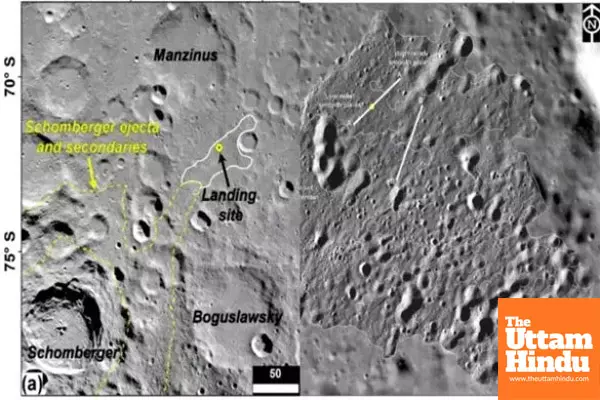
Moon's Shiv Shakti point holds ancient secrets: Chandrayaan-3 scientists make groundbreaking discovery

New Delhi (The Uttam Hindu): In a groundbreaking discovery following India’s Chandrayaan-3 spacecraft's historic landing at the Shiv Shakti Point on the Moon scientists have revealed that the surface at this site located on the Moon’s south pole is approximately 3.7 billion years old. The study conducted by experts from ISRO’s Electro Optics Systems Centre in Bengaluru the Physical Research Laboratory in Ahmedabad and Punjab University in Chandigarh mapped the landing site using high-resolution remote sensing datasets.The study identified three main types of terrain at Shiv Shakti Point: high-relief rugged areas smooth plains and low-relief smooth plains. Researchers analyzed craters and rocks using the Lunar Reconnaissance Orbiter's (LRO) wide-angle and terrain cameras. The analysis of 25 craters ranging in diameter from 500 to 1,150 meters led to the estimation of the landing site's age coinciding with the time when microbial life first evolved on Earth.
ISRO scientists highlighted that the surface of the Moon is continually changing due to micro-meteorite bombardment and thermal fluctuations. Over millions of years these rocks have fragmented and transformed into regolith providing significant insights into the geological history of the Moon’s south pole. This discovery marks a monumental contribution to understanding the ancient past of the Moon enriching humanity’s knowledge of our celestial neighbor.
Chandrayaan-3 continues to unfold, leaving an indelible mark on space exploration, with each new discovery pushing the boundaries of scientific understanding and curiosity.

